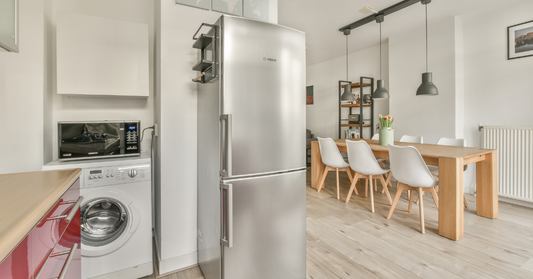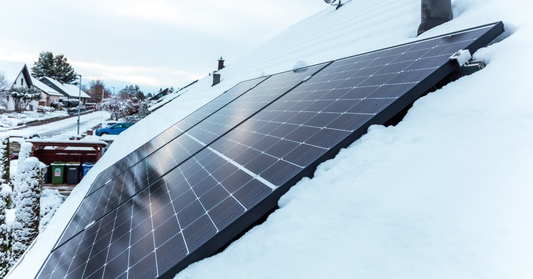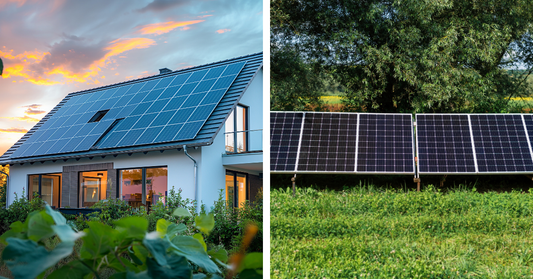The future belongs to energy storage! This is the result of growing public awareness of the benefits of storing energy produced by home photovoltaic installations. Year by year, we can observe increasing interest in energy storage. Given the high popularity of power banks, we decided to look at the technical issues related to their installation. How to integrate an energy storage into an existing network? We will try to explain the entire process in a simple way.
Energy storage – for a secure energy future
Effective management of renewable energy production and its storage are key elements of the ongoing energy transformation, which is a response to climate change and current geopolitical challenges. Energy storage facilities are an important link in designing a secure energy future for the entire country. It is no wonder that the need to install energy banks is becoming increasingly emphasized. According to the draft update of the Polish Energy Policy, approximately 5 GW of power is to be created in prosumer and large-scale energy storage facilities by 2040. According to the EUPD Research report, the number of home energy storage installations in Poland increased by 80% in 2022 compared to 2021. These data confirm the growing public awareness of the benefits of energy storage.
There is no doubt that investing in energy storage is of great importance for the Polish energy sector. But what does it provide us – ordinary prosumers, generating electricity for the needs of their own households? First of all, it guarantees energy independence. An energy storage facility allows you to store energy when it is cheap and available, in order to use it at a time of increased demand or higher prices. What is more, the storage facility increases the stability and reliability of energy supplies, generates savings on energy bills, and also allows you to trade energy on capacity markets, guaranteeing additional income.
There is no doubt that investing in an energy storage facility is a good solution. How to connect the device to the existing network?

What do you need to connect an energy storage system to an existing photovoltaic installation?
In order for a photovoltaic installation equipped with an energy storage to operate fully effectively, it must be properly configured and adapted to the current energy demand of the household. This requires the purchase of appropriate additional components that will ensure efficient and effective cooperation of the individual elements of the PV installation. In addition to an energy storage with appropriate capacity, you should purchase:
- battery inverter or hybrid inverter – an inverter, also known as an inverter, is a device that converts direct current obtained by solar panels into alternating current, necessary to power home appliances,
- DC and AC cables – cables used in the PV installation must be resistant to chemicals, water, and high temperatures; they should also have appropriate electrical properties,
- charge regulator – a device that prevents excessive overcharging of the storage voltage and the occurrence of the reverse current flow phenomenon, and also provides information on the condition of the battery, its charge level and operating efficiency.
Step-by-step integration of energy storage into existing network
Connecting an energy storage facility to an existing photovoltaic installation is a process that requires rational planning. The first stage should be a detailed energy audit of the installation, taking into account its power and whether it meets the investor's requirements. Data collected during the audit will be used to design the energy storage system.
The design of the storage system should determine whether the storage will be a power source for all household appliances or only for some of them. In addition, it should be decided whether the storage will operate on a daily basis or will be only an emergency solution. This data is of great importance in the context of selecting the bank (and above all its power, technology of production, durability) and additional components supporting its operation.
After completing the project and purchasing the appropriate warehouse and additional components, it is time to assemble it. The installation should be carried out by a professional assembly team. This guarantees that everything will be done in accordance with the highest quality standards and safety requirements. Connecting the warehouse to the network yourself may result in the loss of the manufacturer's warranty for the device. What's more, lack of experience is a risk of errors that can even lead to a fire in the installation.
The storage unit can be installed outdoors, in a utility room, garage or other room. When installing it inside a building, remember to provide adequate ventilation.
A few words at the end
The integration of an energy storage facility into an existing network requires knowledge, experience and rational planning. First of all, it is important to remember to match the energy bank to the individual needs of the household, as well as to equip the installation with the necessary additional components - and especially with an appropriate inverter, which guarantees efficient and effective cooperation of all elements of the photovoltaic installation.
Is it worth including an energy storage in your home photovoltaic network? Without a doubt! Energy storage provides energy independence and also gives you a chance for a stable and secure energy future.





